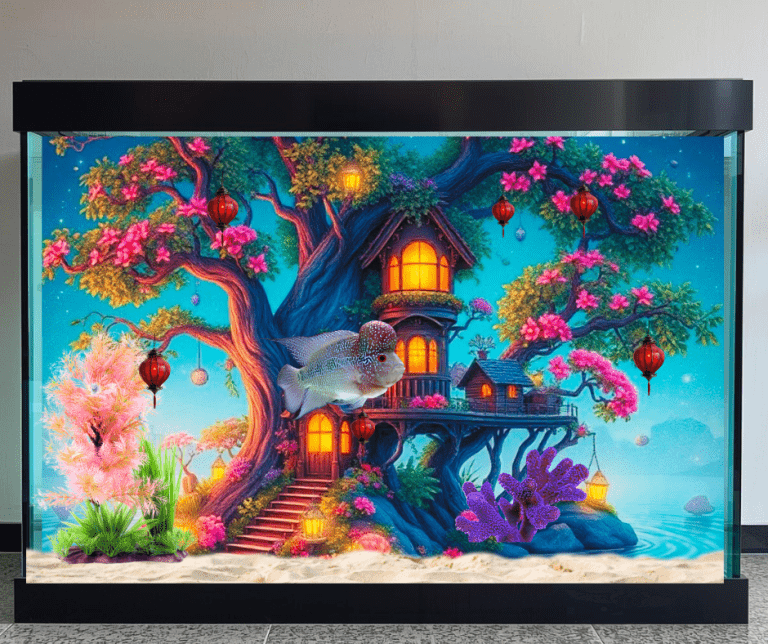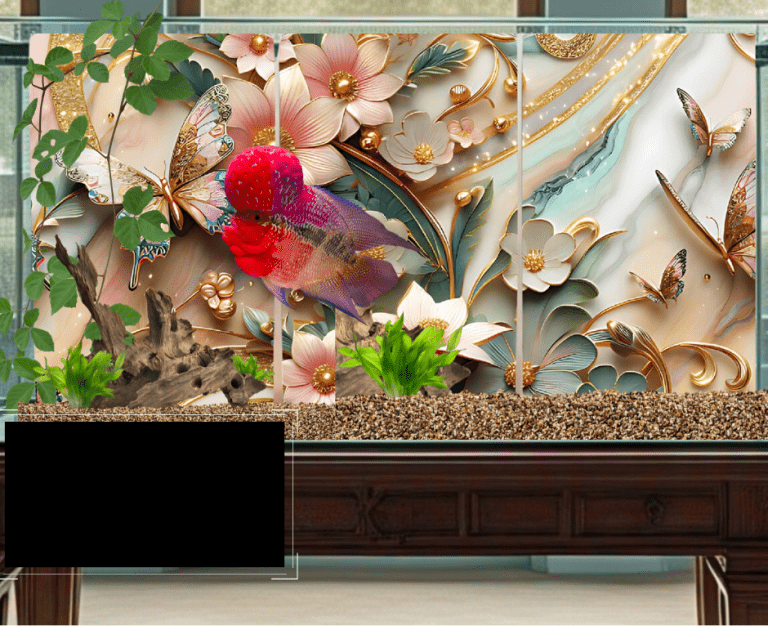Subscribe For $10 Off 1st Background
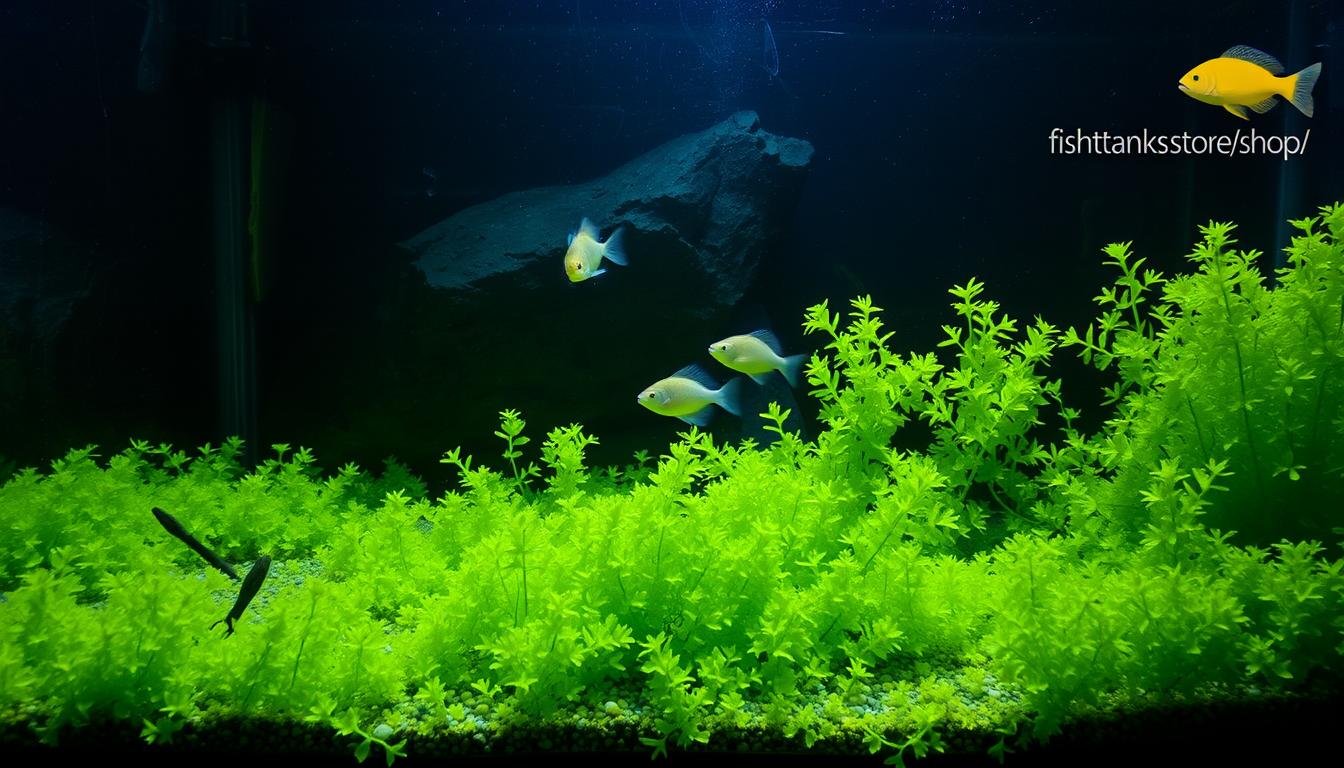
New Fish Keepers Need To Know About These Six Most Common Problems
As new fish keepers, we’re excited to set up our aquariums. But, we soon find it hard to keep a healthy environment for our fish.
Creating a thriving aquarium means knowing the common problems. In this article, we’ll look at the six biggest issues for new fish keepers. We’ll also share tips to solve them, including new tank syndrome.
By the end of this guide, you’ll know how to keep your aquarium healthy. This ensures your fish stay well.
Key Takeaways
- Understanding the common problems faced by new fish keepers
- Learning how to overcome new tank syndrome
- Discovering expert tips for maintaining a healthy aquarium
- Identifying the six most common issues in fish keeping
- Understanding the importance of proper aquarium maintenance
What Every New Fish Keeper Should Know Before Starting
Starting our aquarium journey is exciting. But first, we must know the basics. We need to avoid common issues like unstable water and stressed fish.
Essential Equipment for a New Fish Keepers First Aquarium
We need the right gear for a healthy tank. This includes a filtration system and a heater. Experts say a good filter is key to a healthy tank.
Filtration and Heating Systems
A good filter keeps the water clean. A heater keeps the water at the right temperature. For most fish, this is between 76-82°F (24-28°C).
Water Conditioners and Testing Supplies
Water conditioners make tap water safe for fish. Water testing supplies help us check the water’s health. Regular checks help us keep the tank balanced.
| Equipment | Purpose |
|---|---|
| Filtration System | Removes waste and excess food |
| Heater | Maintains stable water temperature |
| Water Conditioner | Removes chlorine and chloramines |
| Water Testing Supplies | Monitors water parameters |
Selecting Hardy Fish Species for Beginners
Picking the right fish is important. Hardy species are best for beginners. Guppies, Neon Tetras, and Corydoras Catfish are good choices. They’re easy to care for and add color and life to the tank.
Understanding the Aquarium Nitrogen Cycle
Knowing about the nitrogen cycle is key to keeping your fish healthy. It’s a natural process that turns harmful waste into safer stuff.
The Biological Science Behind a Healthy Tank
Beneficial bacteria live in your tank’s filter and substrate. They are vital in breaking down waste. This keeps your fish environment safe and healthy. Check out this post from the guys at Tetra (the fish food people) for more info on feeding and fish health.
Ammonia, Nitrite, and Nitrate Conversion
The cycle changes ammonia into nitrite and then nitrate. This is important because ammonia and nitrite are bad for fish. But nitrate is mostly safe in small amounts.
Beneficial Bacteria Colonies
Beneficial bacteria are the heart of a good nitrogen cycle. They grow in the tank, like in the filter and substrate. They help break down bad waste.
Monitoring Your Tank’s Cycling Progress
It’s important to watch how your tank’s cycle is going. Test the water for ammonia, nitrite, and nitrate often. This tells you if the cycle is working right.
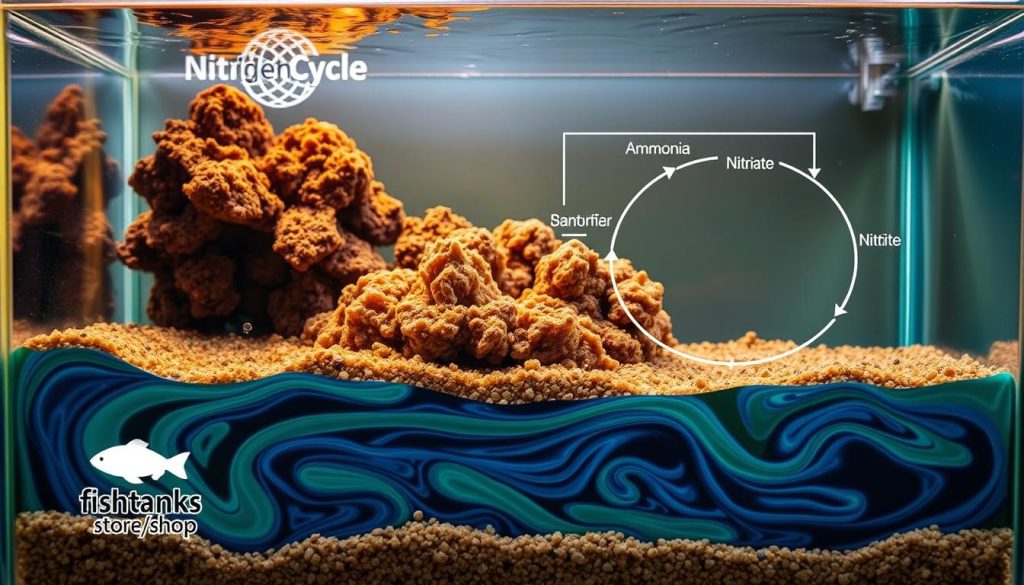
Learning about the nitrogen cycle helps avoid new tank syndrome. This is a big problem for new fish keepers. Knowing this keeps your aquarium healthy and full of life.
Problem #1: New Tank Syndrome and How to Prevent It
New tank syndrome is a common problem in new aquariums. It happens when the tank is still cycling and the water isn’t stable. We can prevent it by using two main methods: fish-in cycling and fishless cycling.
Fish-In Cycling: Managing Risks and Stress
Fish-in cycling means adding fish to a cycling tank. It’s important to watch the fish closely and change the water daily.
Daily Water Changes and Parameter Testing
Changing 25-50% of the water daily is key. Also, test the water often. This keeps the water clean and safe for the fish.
Using Bacterial Supplements
Bacterial supplements help grow good bacteria. This makes the tank safer for fish during the cycling process.
Fishless Cycling: The Safer Approach
Fishless cycling means cycling the tank without fish. It uses ammonia to feed the good bacteria. This method is safer for fish.
Ammonia Sources and Dosing
We can use pure ammonia or fish food to cycle the tank. It’s important to dose the ammonia right to avoid harming the tank.
Timeline and Patience
Fishless cycling takes time, often weeks. It’s important to test the water regularly to see how it’s doing.
Both methods have good and bad sides. Fish-in cycling is risky but lets you add fish right away. Fishless cycling is safer but takes longer and needs more patience.
| Method | Risks | Benefits |
|---|---|---|
| Fish-In Cycling | Stress and harm to fish | Immediate introduction of fish |
| Fishless Cycling | Longer setup time | Safer for fish, stable environment |
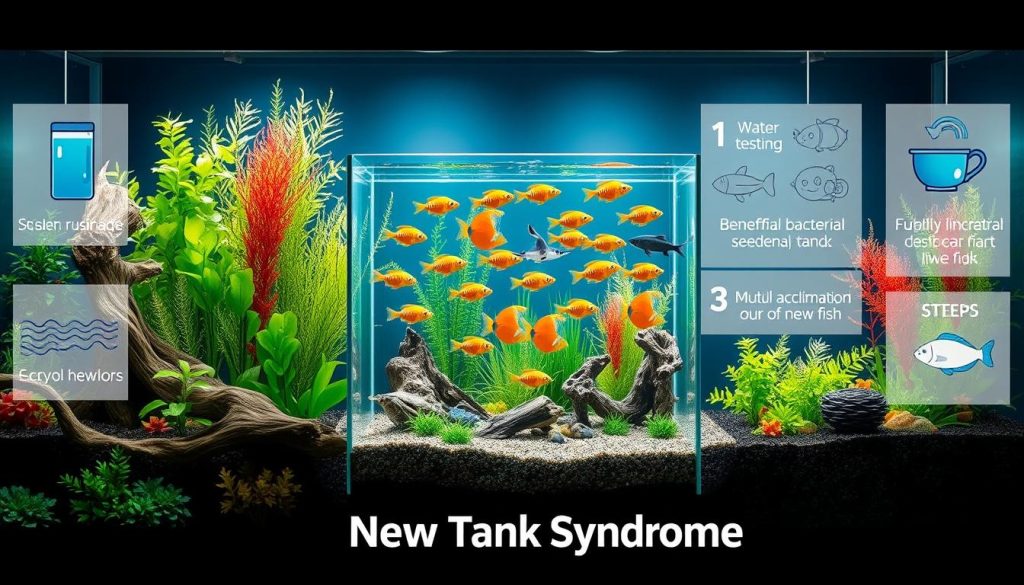
Knowing the risks and benefits of each method helps us choose the best way to prevent new tank syndrome. This way, we can create a healthy home for our fish.
Problem #2: Establishing a Proper Tank Maintenance Routine
Keeping a healthy aquarium needs a steady and detailed care plan. We will look at key steps to keep our tank clean and our fish happy.
Weekly Maintenance Tasks for Healthy Aquariums
Weekly tasks are key for a healthy aquarium. They stop toxins from building up and keep our tank looking great. Why not check out our post on keeping a maintenance schedule for your tank, along with a handy download to record your tasks on.
Partial Water Changes
We should change 10-15% of the tank’s water weekly. This removes waste and keeps water quality good, stopping algae.
Substrate Cleaning Techniques
Using a gravel vacuum helps clean the bottom. It stops decay and keeps water quality high. Cleaning the bottom regularly is vital.

Monthly Deep Cleaning Procedures
Monthly deep cleanings are also needed. They do a deeper clean and care for our tank’s parts.
Filter Maintenance Without Killing Bacteria
Cleaning the filter right is important. We should gently rinse the filter media in old tank water. This keeps our ecosystem balanced.
Algae Removal from Decorations and Glass
Algae on decorations and glass is bad for our tank. We can remove it with an algae scraper and gentle cleaners. This keeps our tank clear and healthy.
| Task | Frequency | Purpose |
|---|---|---|
| Partial Water Changes | Weekly | Remove waste products, maintain optimal water parameters |
| Substrate Cleaning | Weekly | Remove debris, prevent decay |
| Filter Maintenance | Monthly | Preserve beneficial bacteria, maintain nitrogen cycle |
| Algae Removal | Monthly | Improve appearance, prevent algae overgrowth |
Problem #3: Combating Algae Blooms and Cloudy Water
Dealing with algae blooms and cloudy water is tough for new fish keepers. These problems stress out both the fish and the keeper. If not fixed, they can get worse.
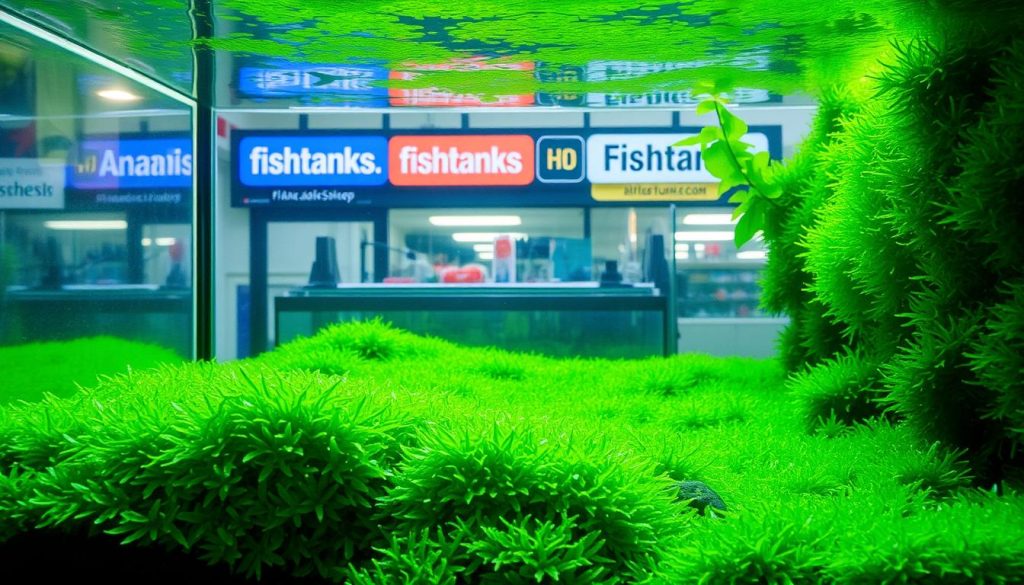
Identifying Different Types of Algae Infestations
Algae infestations have different types, each with its own look. Knowing these differences helps manage them better.
Green Water vs. Brown Diatoms vs. Hair Algae
Green water comes from too much phytoplankton, making the water green. Brown diatoms turn the water brown, common in new tanks. Hair algae looks like strings and can cover plants and decorations.
“Identifying the type of algae is the first step towards controlling it.”
Bacterial Blooms vs. Algae Blooms
Bacterial blooms make water cloudy, often mistaken for algae. But they have different causes and treatments. Bacterial blooms show an imbalance in the tank’s ecosystem, often from too many nutrients.
A key distinction:Algae blooms are about light and nutrients. Bacterial blooms are about the tank’s biological balance.
Proven Solutions for Crystal Clear Water
To fight algae blooms and cloudy water, you need a few steps. Adjusting light, managing nutrients, and using the right treatments can clear the water.
Lighting Control and Nutrient Management
Too much light can make algae grow. Check and adjust nutrient levels, like nitrates and phosphates, to control algae.
“Proper lighting and nutrient management are the cornerstones of a healthy aquarium.”
Chemical vs. Natural Remedies
There are many remedies, from chemicals to natural ones like algae-eating fish or plants. Chemicals work fast, but natural methods are better for the long run.
Adding algae-eating fish or plants that fight algae for nutrients is a good long-term plan.
Understanding algae blooms and cloudy water, and using the right strategies, helps new fish keepers keep their tanks clear. Regular checks and adjustments are key to avoiding these problems.
Problem #4: Overfeeding and Its Consequences
Keeping a balanced feeding schedule is key for our fish’s health and our tank’s well-being. Overfeeding can cause many problems, like water quality issues and stress on fish. We will look at the effects of overfeeding and how to avoid it.
Determining the Correct Feeding Schedule
To avoid overfeeding, we need to find the right feeding schedule for our fish. We must know their specific feeding needs and the type of food they need.
Species-Specific Feeding Requirements
Different fish need different foods. Some fish eat a lot of protein, while others need more fiber. It’s important to research what our fish need.
Food Types and Portion Control
The food we give our fish is very important. Using different foods and controlling how much we give can help. Also, we should remove any food that’s not eaten to keep the tank clean.
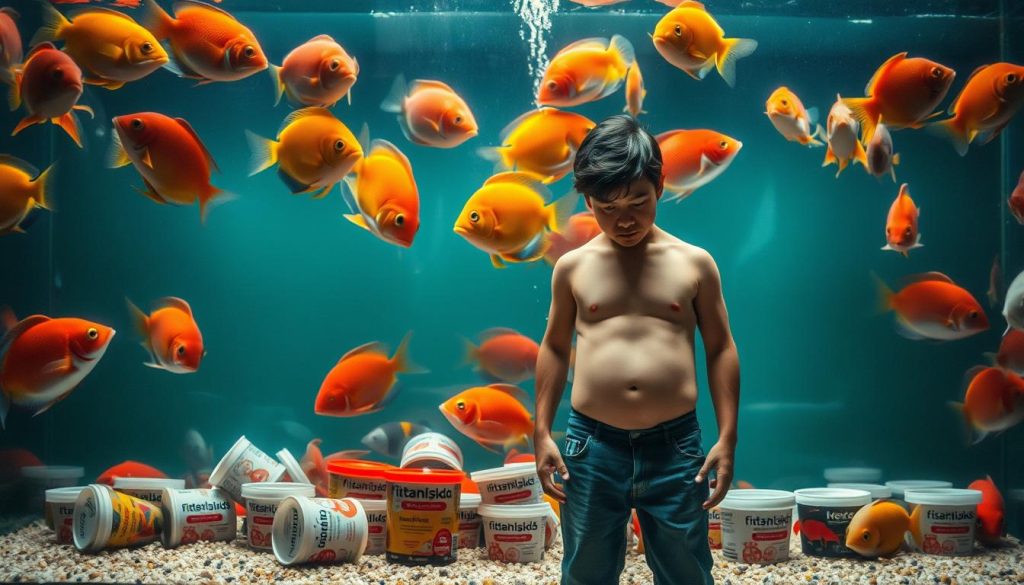
How Overfeeding Affects Water Quality
Overfeeding can really hurt the water quality in our tank. When too much food breaks down, it can make the water toxic to our fish.
Ammonia Spikes from Excess Food
When food breaks down, it can cause ammonia spikes. This is very bad for our fish. We should test the water often to catch these problems early.
Preventing and Addressing Overfeeding Issues
To stop overfeeding, we can try a few things. We can feed our fish small amounts several times a day. We should also use a gravel vacuum to clean up any leftover food. Regular water changes and checking the water’s health can help fix any problems.
| Feeding Schedule | Food Type | Portion Control |
|---|---|---|
| Multiple times a day | Varied diet | Remove uneaten food |
| Research species-specific needs | Avoid overfeeding | Monitor water parameters |
“The key to a healthy aquarium is balance. Overfeeding is a common mistake that can have severe consequences on the health of our fish and the overall well-being of our tank.”
Problem #5: Recognizing and Treating Fish Health Issues
Keeping your aquarium healthy means spotting and fixing fish health problems fast. Fish show signs of trouble for many reasons. Knowing these signs helps you act quickly.
Why Fish Sit at the Bottom or Gasp at the Surface
Seeing fish at the tank’s bottom or gasping is scary. These signs often mean the water lacks oxygen, has too much ammonia, or the fish are sick.
Oxygen Deficiency vs. Ammonia Poisoning
Low oxygen in the tank can make fish sit at the bottom. This happens when there’s not enough air or too many fish. Ammonia poisoning comes from too much ammonia, often from feeding too much or bad filters. Finding the cause is key to fixing the problem.
Disease vs. Water Quality Issues
Diseases in fish can be from bacteria, fungi, or parasites. But, bad water can also make fish sick. Testing the water often helps tell if it’s a disease or water problem. Dr. Chris Andrews said, “Keeping fish healthy means more than just treating sickness. It’s about keeping their environment healthy too.”
“The aquarium is a closed system, and its inhabitants are entirely dependent on us for their health and well-being.”
Emergency Interventions for Distressed Fish
Act fast if your fish seem stressed. Quick water changes and the right treatments are crucial.
Immediate Water Changes
Changing the water quickly can help if it’s not good. Replace a lot of the water with fresh, clean water that’s the same temperature. This simple step can fix many water problems.
Medication and Treatment Options
If your fish are sick, the right medicine is important. There are medicines for bacteria, fungi, and parasites. It’s important to know what disease you’re dealing with to use the right medicine.
Learning the signs of sick fish and how to help them can make your aquarium a healthier place.
Problem #6: Mastering Water Testing and Parameter Management
Mastering water testing and parameter management is key to aquarium care. It lets us check our tank’s water and make changes for a healthy home for our fish.
Essential Parameters Every Fish Keeper Must Monitor
It’s important to watch the right water levels for your fish’s health. This means keeping an eye on pH, ammonia, nitrite, and nitrate levels. Also, temperature and water hardness are crucial.
pH, Ammonia, Nitrite, and Nitrate Levels
Keeping pH levels right is vital for your fish’s health. Ammonia and nitrite levels should be near zero for a good nitrogen cycle. Nitrate levels should also be low through regular water changes.
Temperature and Water Hardness
Temperature is key for your fish’s comfort and health. Most freshwater tanks do best between 76°F to 82°F. Adjusting water hardness is also important for your fish’s needs.
| Parameter | Ideal Range |
|---|---|
| pH | 6.5-8.5 |
| Ammonia | 0 ppm |
| Nitrite | 0 ppm |
| Nitrate | < 20 ppm |
| Temperature | 76°F – 82°F |
Using Test Kits Effectively for Accurate Results
To get right results from water tests, use test kits well. Know the difference between liquid tests and test strips. Also, understand how to read your results.
Liquid Tests vs. Test Strips
Liquid tests are more precise but take more effort. Test strips are quicker but less reliable for checking water levels.
Interpreting Test Results and Taking Action
After getting your test results, act on them. This might mean changing your tank’s filter, doing water changes, or treating the water for pH or other levels.
“The key to a thriving aquarium lies in understanding and managing its water parameters.”
By learning water testing and management, we can make a stable and healthy space for our fish to thrive.
Natural Solutions for New Fish Keepers
Using natural solutions is a great way to keep your aquarium healthy. By using nature’s ways, we can make our tank a better place for fish.
Incorporating Live Plants for Water Quality
Live plants are a natural way to improve water quality. They soak up extra nutrients, give shade, and keep the water stable.
Easy Beginner Plants That Help Filter Water
For beginners, plants like Java Moss, Anacharis, and Hornwort are perfect. They are tough, simple to care for, and clean the water.
Plant Maintenance Basics
To keep plants healthy, they need enough light and food. We also need to trim them and check on their health often. This keeps the tank balanced.
| Plant Type | Lighting Needs | Care Level |
|---|---|---|
| Java Moss | Low-Moderate | Easy |
| Anacharis | Moderate-High | Easy |
| Hornwort | Low-High | Easy |
Optimizing Water Movement and Oxygenation
Good water flow and oxygen are key for fish health. By improving these, we stop water from getting still and keep the tank healthy.
Air Stones and Bubble Walls
Air stones and bubble walls boost oxygen in the tank. They make water move and help gas exchange at the top.
Filter Output Positioning
Where we place the filter output matters a lot. By aiming it to make a soft current, we mix the water well and keep it full of oxygen.
Filter Media: When and How to Replace Without Crashing Your Cycle
Knowing when and how to replace filter media is key to keeping your aquarium healthy. Filter media help keep the water clean. Replacing them right is important for your aquarium’s balance.
Staggered Replacement Schedule for Different Media Types
Each filter media type needs to be replaced at different times. It’s important to know what each does to keep your aquarium balanced.
Mechanical vs. Biological Media
Mechanical media, like filter pads, catch debris and need regular cleaning. Biological media, like bio-balls, are home to good bacteria. They should be replaced less often to keep the nitrogen cycle going.
Chemical Filtration Replacement
Chemical media, like activated carbon, soak up bad stuff. They should be changed every 1-2 months, as the maker says.
Cleaning Methods That Preserve Beneficial Bacteria
When you clean filter media, it’s important to keep the good bacteria alive. Rinsing them in tank water helps keep the bacteria happy.
Using Tank Water for Rinsing
Using tank water to rinse media keeps the bacteria in their happy place. It keeps the water conditions just right for them.
Avoiding Common Cleaning Mistakes
Don’t use tap water to rinse media. It has chlorine or chloramines that harm good bacteria. Also, be gentle with the media to protect the bacteria.
| Media Type | Replacement Frequency | Purpose |
|---|---|---|
| Mechanical | Regularly | Traps debris |
| Biological | Less frequently | Houses beneficial bacteria |
| Chemical | Every 1-2 months | Absorbs toxins |
Conclusion: Building Confidence as a Successful Fish Keeper
Understanding common pitfalls is key in fish keeping. It helps us avoid problems in our aquariums. Knowing how to maintain tanks, test water, and manage parameters is crucial.
Using natural solutions like live plants and good water flow helps a lot. These steps improve water quality and keep our fish healthy. This way, we become more confident in caring for our fish.
Starting as a new fish keeper can be tough. But with patience and the right knowledge, we can do it. Following the advice in this article helps us manage our aquariums well. And it brings us joy in caring for our fish.
FAQ
What is new tank syndrome, and how can we prevent it?
Why is our tank water cloudy, and how can we clear it?
How often should we feed our fish, and what are the consequences of overfeeding?
Why are our fish sitting at the bottom of the tank, and what can we do to help them?
How can we manage algae growth in our tank?
What are the essential parameters we should monitor in our tank, and how can we test them effectively?
How can we incorporate live plants into our tank to improve water quality?
When and how should we replace our filter media to maintain our tank’s cycle?

Please fill out our Subscription Form for a Discount Code

